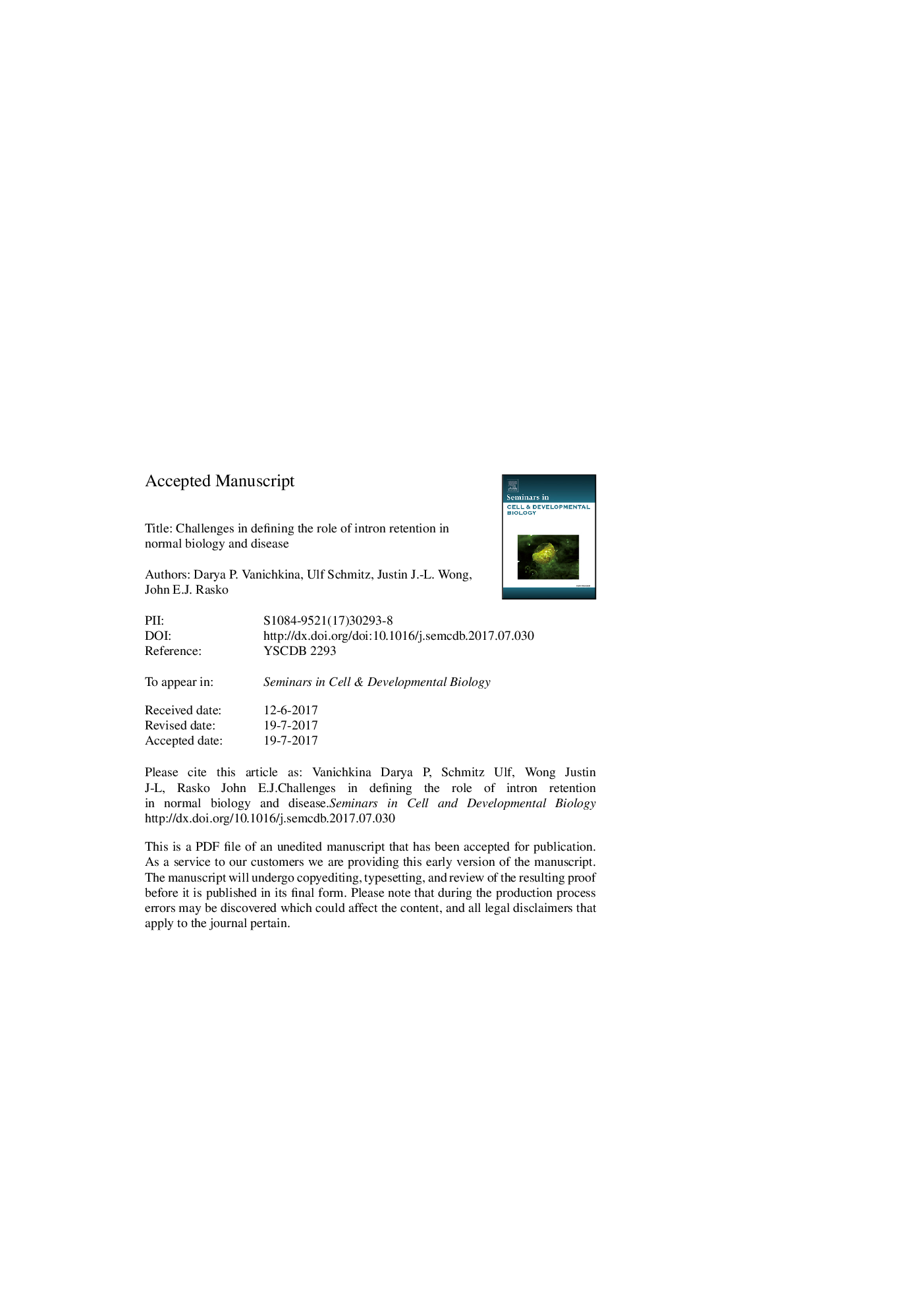| Article ID | Journal | Published Year | Pages | File Type |
|---|---|---|---|---|
| 8479733 | Seminars in Cell & Developmental Biology | 2018 | 38 Pages |
Abstract
RNA sequencing has revealed a striking diversity in transcriptomic complexity, to which alternative splicing is a major contributor. Intron retention (IR) is a conserved form of alternative splicing that was originally overlooked in normal mammalian physiology and development, due mostly to difficulties in its detection. IR has recently been revealed as an independent mechanism of controlling and enhancing the complexity of gene expression. IR facilitates rapid responses to biological stimuli, is involved in disease pathogenesis, and can generate novel protein isoforms. Many challenges, however, remain in detecting and quantifying retained introns and in determining their effects on cellular phenotype. In this review, we provide an overview of these challenges, and highlight approaches that can be used to address them.
Keywords
NMDmRNAPTCqRT-PCRIRTmessenger RNAESTEpigeneticsGene expressionBioinformaticsRNA sequencingExpressed Sequence TagAlternative splicingIntron retentionnonsense mediated decayPhylogenyquantitative reverse transcription polymerase chain reactionSingle nucleotide polymorphismSNPpremature termination codon
Related Topics
Life Sciences
Biochemistry, Genetics and Molecular Biology
Cell Biology
Authors
Darya P. Vanichkina, Ulf Schmitz, Justin J.-L. Wong, John E.J. Rasko,
